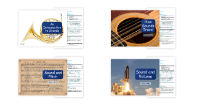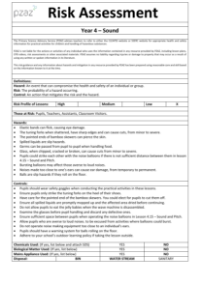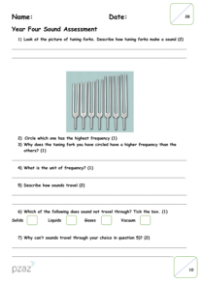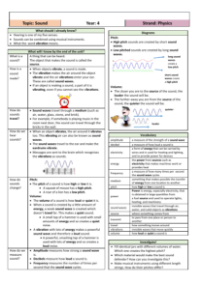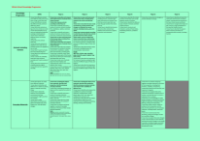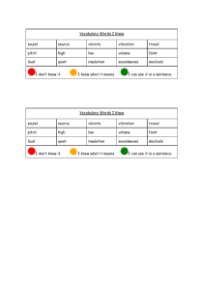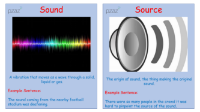Sound - Answers
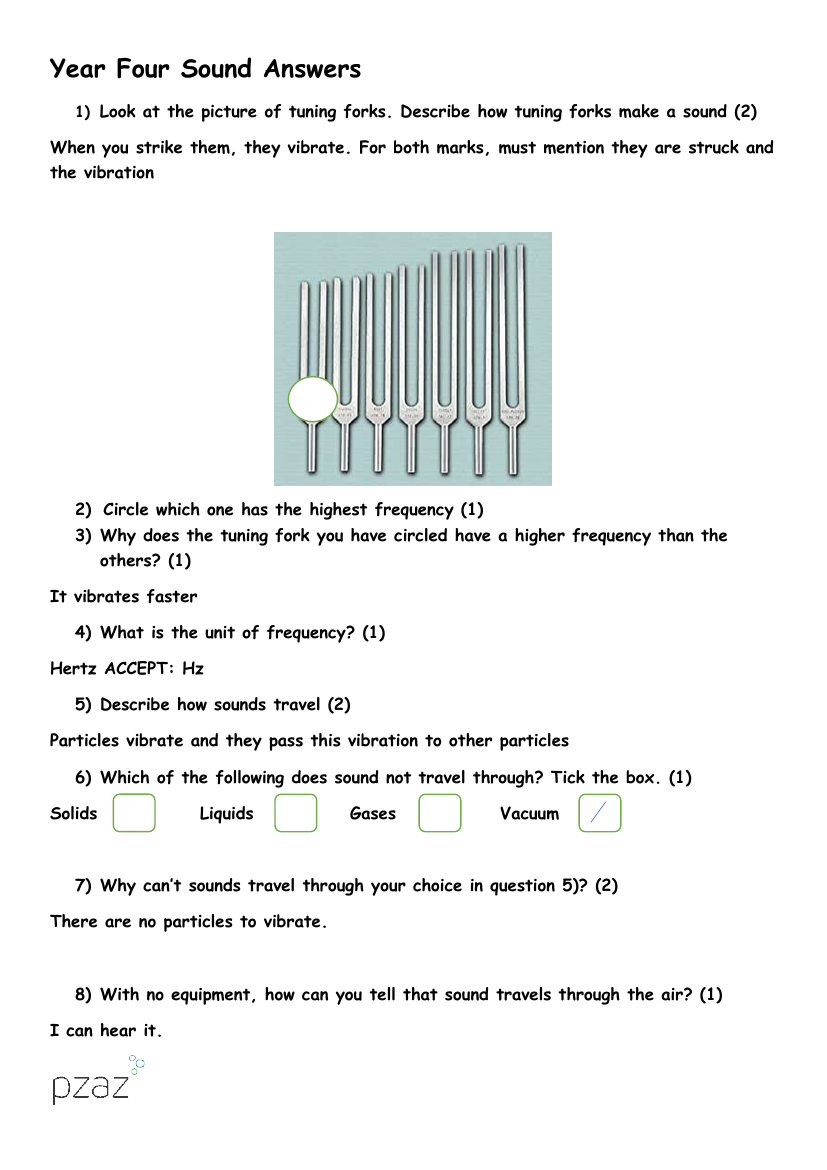
Science Resource Description
In the Year Four Sound Answers, students are quizzed on their understanding of how sound is produced and travels. For example, they learn that tuning forks create sound by being struck, which causes them to vibrate. The concept of frequency is explored, with students identifying which tuning fork has the highest frequency based on the speed of its vibrations, and learning that frequency is measured in hertz (Hz). They also discover that sound travels through the vibration of particles, and that it cannot travel through a vacuum as there are no particles to vibrate.
The answers further explain that sound travels better at sea-level compared to Mount Everest due to the higher density of particles. The relationship between frequency and pitch is clarified, stating that a higher frequency results in a higher pitch, illustrated by identifying a high-pitched sound as 'squeaky'. Students examine an experiment to determine which bottle produces the lowest pitch when tapped, concluding that the bottle with more water has the lowest pitch as it requires more energy to vibrate. Volume is defined as the loudness of a sound, and through an experiment with ball bearings, students observe that a higher drop height results in a louder impact. The independent variable in this experiment is the drop height. Predictions are made about the loudness at different heights, and calculations are performed to determine how long it takes sound to travel certain distances, as well as the distance sound travels in a given time. Lastly, it's explained that sound gets quieter with distance because the energy of the vibrations diminishes as it is passed on.

